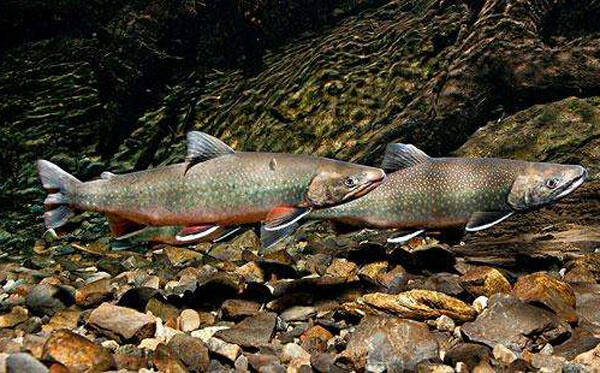Salvelinus malma is a fish of the genus Salmonidae, with a body color ranging from brown to gray. The malma trout has a wide diet, mainly benthic animals (mainly mollusks) and insects that fall into the water, and sometimes even jumps out of the water to prey.

There are two types of char: landlocked and migratory. The landlocked type is found in my country. It lives in the cool waters of the main streams and tributaries of rivers for life. In September and October every year, when the water temperature is around 8℃, it lays eggs in the slow flow with gravel bottom and water depth of 30-60 cm. It reaches sexual maturity at 3-4 years old. Oval, orange-yellow, 4.2-5.0 mm in diameter. The egg carrying capacity is 194-310 eggs. It has a wide diet, mainly bottom-dwelling animals and insects that fall into the water, and sometimes even jumps out of the water to prey.

A new study found that not only can the spotted char survive this condition, but they can also change the volume of their intestines depending on the amount of salmon eggs - their favorite food.
This strange phenomenon was discovered by biologists Jonny Armstrong and Morgan Bond of the University of Washington while studying the migration patterns of spotted trout. In the first four to five years of life, spotted trout travel to the North Pacific to feed in the spring and summer, returning to freshwater streams and lakes in the winter. After that, the fish stay in freshwater for the rest of their 12-year life.
The expanded intestine allows spotted trout to maximize the use of excess food and conserve as much energy as possible. When the salmon eggs are eaten, spotted trout begin to become frugal. The reduced intestine allows the fish to maintain body functions without eating as much. Armstrong pointed out: "It's like choosing a car. A sports car may be the fastest, but it also consumes the most gasoline. The 'flexibility' of the digestive system is a very valuable strategy for animals living in an environment where 'feast and famine' alternate. This allows animals to eat as much as possible when food is abundant, and burn less energy when food is scarce."
In some salmon populations, about half of the fish will become commercial catches. Scientists can't help but start to worry about whether such fishing will affect the number of their predators. However, judging from the results of Armstrong and Morgan's research, the spotted trout in Lake Chignik will not be affected by the salmon fishing industry for the time being, which may be due to their amazing ability to "wait for the next meal."
Listed in the second level of the "List of National Key Protected Wildlife in China". (Wild populations only)
In December 2021, it was included in the third batch of the "List of National Key Protected Aquatic Wildlife under Artificial Breeding" by the Ministry of Agriculture and Rural Affairs.
Protect wild animals and eliminate game.
Maintaining ecological balance is everyone's responsibility!